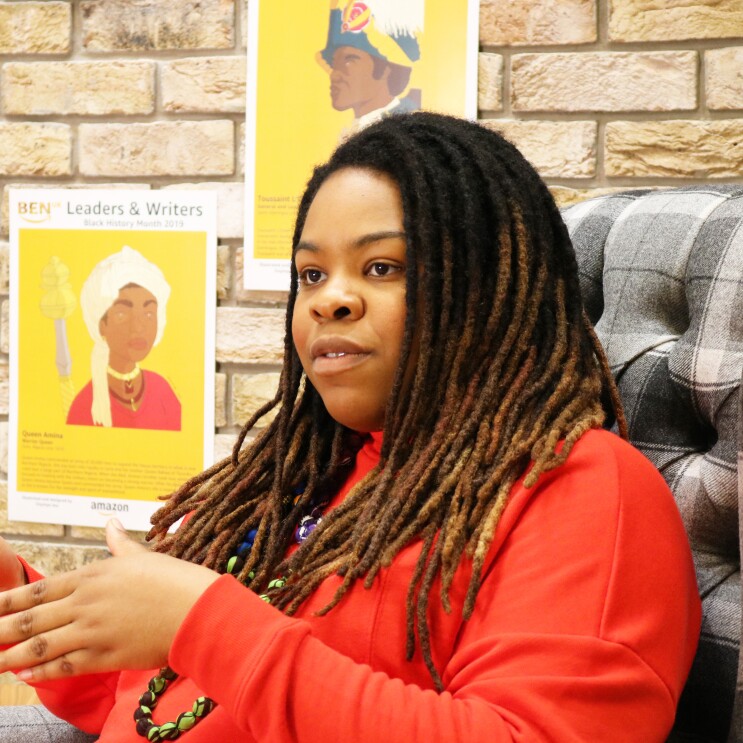More than 60 schools around the country will receive free posters portraying legendary African figures as part of our celebrations for Black History Month.
Led by Aisha Suleiman, Executive Board Director of the Black Employee Network (BEN) in the UK, unique and inspiring illustrations of historical African figures were commissioned from artist and illustrator Onyinye Iwu. BEN members selected the historical figures who inspire them – including warrior queens, abolitionists, early practitioners of medicine and music composers.

This Black History Month, Alexa users can also find out more about these historical figures by using a few simple utterances:
- “What is Black History Month?”
- “Tell me about Black History Month.”
- “Tell me about Queen Amina.”
- “Tell me about Ignatius Sancho.”
Amelia Dickens, a Machine Learning Data Analyst in Amazon’s Alexa team, worked with BEN members to share these iconic stories through Alexa. Amelia said: “Each person was so unique and fascinating. I loved getting to learn their stories myself in the process, and now Alexa will be able to share this with a huge audience.”
To celebrate the launch, we invited Onyinye to Amazon’s London office to discuss her artistic process and what Black History Month means to her. Onyinye was joined by BEN members who explained why these historical figures can shape the way we think about black achievement and identity.
Onyinye Iwu, artist and illustrator

Onyinye is an artist, illustrator and teacher based in East London. Her most recent work has focused on ‘Queens of Africa’ and she is passionate about redefining how we think about black identity in Britain.
“When we talk about black history and achievement, there are certain people who come up repeatedly, often African-Americans. But it’s important for those of us living in Britain with African and Caribbean heritage to be represented as well. I believe that we all need to be represented, and sometimes that means thinking differently and diving deeper.”
Onyinye’s work is inspired and informed by her own historical research and she uses a range of resources to recreate the likeness of her subjects. “There are no photographs of these figures, so I piece together their appearance by referring to historical resources. For example, I would look at the facial features and clothing of indigenous people in Africa at the time to recreate their appearance.”This passion for creativity is rooted in her childhood: “I was an only child at the time and we lived in Italy, so I was the only black kid in school. That meant I had lots of spare time at home to draw, think and write.”“When I got older, I realised that my illustrations were never of people who looked like me – subconsciously I was portraying the people I saw around me in Italy. That was an important realisation about the nature of identity and representation.”
Now, Onyinye wants to change the narrative around black identity so young people feel represented and more in touch with black history. “You know, there was black history and achievement before and after slavery. If we don’t expose children to their heritage, they may struggle to relate to the world around them. Films like Black Panther are a brilliant way to change minds, but ultimately those are fictional characters – while these are real historical figures.”
“When I studied the poetry of Chinua Achebe in school I was like, ‘Mum he’s Nigerian, he’s Igbo, he looks like us!’ It was mind-blowing. So my message is that black people have achieved a huge amount throughout history and we should celebrate that.”










